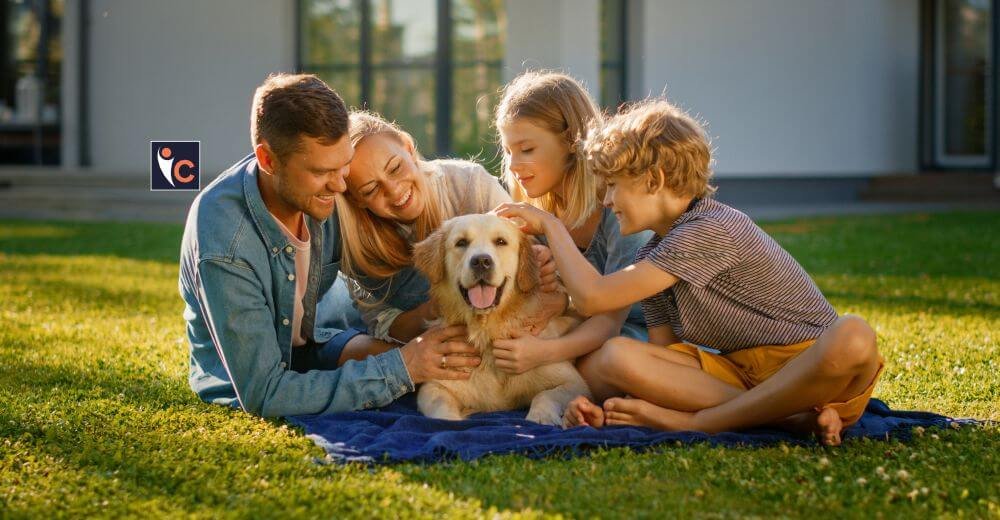Pets as Family
Pets have always occupied a unique niche in the human heart, going beyond their designation as animals to become affectionate members of our own families. Whether it’s a dog wagging its tail at the door, a cat purring contentedly on your lap, or a bird chirping happily in the morning, pets add a special affection that makes our lives richer in so many ways. This bond, founded upon love, trust, and companionship, creates pets to be some of the finest friends we might ever hope for.
In this article, we discuss why pets are not just animals—they are family—and how this phenomenal relationship enriches our emotional, physical, and social health.
The Emotional Connection
Possibly, one of the strongest aspects of the pet-human relationship is the emotional support pets provide. Unlike human relations which are fraught with misunderstandings or anticipation, the love between a pet with their owner is easy and without any conditions attached. Take dogs, for instance, they are loyal beyond measure and are always welcoming to the owners with unending energy regardless of the problems of the day. Cats offer silent companionship and their quiet presence is the balm of a stressful day. Even smaller pets, like hamsters or fish bring a sense of stability and regularity with their care.
Companionship Without Judgment
The distinction, which makes pets as companions, is that they do not judge. They do not care about your job, your money or your mistakes, they love you as you are. This full-scale acceptance makes a person feel a sense of belonging especially to those who at times feel isolated or misunderstood. In the case of children, pets will be their first friends and they will teach them about compassion, responsibility and taking care of another animal. Among the old people, pets serve as friends because they combat loneliness; they give the old people the motivation to keep busy and active.
The daily habits of caring for a pet—feeding, walking, grooming—establish a communal rhythm that deepens this connection. A dog’s anticipatory enthusiasm for a morning walk or a cat’s inviting prod for play incorporates pets into the everyday experience, integrating them into the family structure. These points of intersection, no matter how trivial, establish trust and interdependence, similar to that of human family relationships.
Physical and Social Benefits
Along with emotional support, pets are significant to our physical and social well-being. An example of this is that dog owners are likely to achieve the recommended amount of daily physical activity due to regular walking which can provide benefits cardiovascular health and avoid obesity. The activity that accompanies pet playing like throwing a ball to a dog or teasing a cat with a toy is healthy to both the lifestyle of the pet and the owner.
The Function of Pets in Family Life
Pets tend to have special roles in families, fitting into individual needs. They may be guard animals, playmates, or even peacekeepers. A dog may know something is amiss in the home and provide comfort, lying at the side of an upset family member. The playful mischievousness of a cat may defuse a difficult situation, filling the room with laughter. In households with kids, pets become veritable siblings of a sort, going on adventures together and bringing constant pleasure and education.
For others, pets are also the bridge to healing. Pets provide a secure environment for emotional processing in families that are going through grief or trauma. Family members are able to open up through their presence, as discussing issues with a pet is easier than discussing them with another human being. This function as emotional anchors makes them part of the family, not as companions.
The Lifelong Impact
The relationship with a pet tends to have a lasting effect, influencing the way we perceive relationships and responsibility. For most, losing a pet is equivalent to losing a relative, a reflection of the bond being so strong. Still, even in sorrow, memories of a pet’s love remain, instructing us on resilience and the importance of living in the moment.
Pets also show us about life cycles. Nurturing a pet from its stages—puppy stage to old age, or a kitten’s playful years to its tranquil seniority—echoes the human experience, promoting empathy and patience. These lessons follow on, shaping how we engage with others and cope with life’s hardships.
Conclusion
Pets are much more than beasts; they are members of the family who bring joy, comfort, and meaning to our lives. Their unwavering love, combined with the emotional, physical, and social rewards they offer, renders them unbeatable companions. Whether it is the wag of a dog’s tail, the gentle purr of a cat, or the silence of a small pet, these animals embed themselves in our hearts and homes, forming attachments that last a lifetime. In a world that can often feel chaotic, pets offer a steady, loving presence, reminding us of the simple beauty of connection. As family, they teach us to love deeply, live fully, and cherish every moment together.





